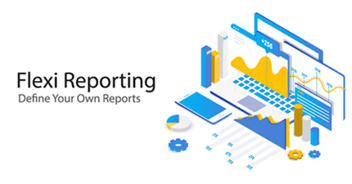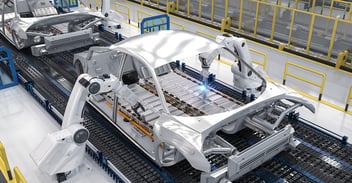

In this era of digitalization, smart enterprise solutions are all about Cloud, Mobility, Analytics, AI/ML, with IoT and AR/VR technologies. The dawn of intelligent enterprise solutions is upon us. Today, nobody wants just a transactional system. Instead, customers look for cognitive solutions which will provide real time visibility and recommend the best course of action by studying and analyzing statistical patterns, past usage behaviour, constraints and various other critical dimensions.
The fundamental reason why organizations need to implement asset management is because it makes good business sense. All asset-intensive organizations need an ordered, structured, disciplined way of controlling assets. Cloud-based EAM software can unleash new growth opportunities as compared to on-premises software. Embedding solutions with telematics and IoT technologies pushes demand for EAM that will analyze asset performance and health condition in real time. Adoption rate of smart EAM solution will rise sharply as end-users shift towards remote monitoring and predictive maintenance. Focus on IT-OT interoperability, and seamless integration with third-party vendors also drives the users towards adoption of EAM solutions.
Digitalization of asset management truly enables organizations to leverage the power of digital technology to control their spending on maintaining their assets optimally and ensure that automation of EAM increases efficiency, margins, ROI, and inventory maintenance accuracy. Two huge advantages it brings to the organization are:
- It is proving to be the crucial differentiator in commoditized industries
- It is breaking down functional silos across the business
Understanding uniform commodity industry
In industries which have no direct consumer influence, or where product is a uniform commodity (such as aviation, ports, manufacturing, oil, and power generation), the options available for differentiation are very limited. The differentiation in such cases is the efficiency of EAM, which essentially determines the productivity, availability, reliability, cost of utilization of physical assets, and ease of asset maintenance and management throughout its lifecycle.
Breaking down silos
The greatest barrier to an effectual EAM is siloed approach to operations. Digitalized EAM ensures collaboration between, and communication across departments in a way that every stakeholder receives the same version of data, is aware of the status of the relevant assets, and makes informed decisions that do not contradict with the operations of any other team. The returns on asset management enterprise applications depends on collaboration between various departments such as IT, engineering, procurement, stores, finance, safety etc. Alignment across engineering groups and IT is also needed to realize value of asset analytics.
Ramco EAM solution has been helping various asset intensive industries across verticals to manage assets throughout its lifecycle at optimum CAPEX and OPEX with higher performance and lower TCO. Ramco has always been a frontrunner when it comes to adopting innovation & new technologies and incorporating them into its solution for better user experience. Ramco’s next-gen EAM solution is packed with these capabilities. It is a holistic solution designed to manage and control various asset management business functions, with enterprises investing in and embracing IoT-based technologies along with cloud, mobility, analytics, and AI/ML. It builds a connected ecosystem by establishing seamless connections with other systems across the value chain. These next-generation technologies enable the smart enterprise in a changing world, paving the way to increased profitability and reliability.
Frequently Asked Questions (FAQs)
Enterprise asset management (EAM) involves the management of mission critical assets of an organization throughout each asset's lifecycle. EAM is used to plan, optimize, execute, and track the needed maintenance activities with the associated priorities, skills, materials, tools, and information. The aim is to optimize the quality and utilization of assets throughout their lifecycle, increase productive uptime and reduce operational costs.
Enterprise asset management (EAM) involves the management of the maintenance of physical assets of an organization throughout each asset's lifecycle. EAM is used to plan, optimize, execute, and track the needed maintenance activities with the associated priorities, skills, materials, tools, and information.
The software helps in effective maintenance of assets through preventive, predictive, shutdown and breakdown maintenance strategies. The system also helps enterprises mitigate equipment risks by enhanced safety standards. The streamlined operations and improved asset performance helps organizations increase their investment effectiveness.
EAM is important because it helps organizations track, assess, manage and optimize asset quality and reliability. Asset intensive Organizations have hundreds, thousands, even millions of assets which needs to be maintained to maximize / optimize life of these assets to increase the return on investment.
The key features of effective EAM are:
- Work management.
- Maintenance Strategies (Preventive/ Predictive / Breakdown / Shutdown).
- Planning and scheduling.
- Supply chain management.
- Health and safety.
- Mobility.
- Analytics.
- Improved Asset Health at reduced cost through data driven maintenance Programs
- Complete visibilityon entire maintenance data across Equipment, across Models, across Branches to aid in analysis & decision making such as to Repair or Replace the Equipment
- Insightful analysis of Inspection Data to improve customer satisfaction
- Effective maintenance management enhanced by predictive maintenance and inbuilt analytics
- Increased reliability and safety, keeps complete track of all the inspections & calibration schedules
- Mobile Application enables users to execute work while “in the field” leading to minimized non-productive time and increased productivity and reduces duplication of work and human errors in recording information.
- Quick turnaround time through Actionable Notification & Alerts for every process in real time and accessible anytime and anywhere.
- Improved Regulatory Part of asset management involves the implementation of better O&M practices, which can significantly improve compliance.
Asset Intensive companies under the following Industries :
- Ports
- Cement and Mining
- Utilities
- Fleet Maintenance
- Equipment Rental
- Other Manufacturing
- Real Estate & Infrastructure
- Power Generation
Contact us for a meeting and schedule a demo
This differs on case to case basis, based on the type of installation and unique industry specific requirements. Contact us for a meeting and schedule a demo.
This differs on case to case basis, based on the type of installation and unique industry specific requirements. Contact us for a meeting and schedule a demo.
Stay Connected, follow us on LinkedIn / Twitter to know more about EAM Software latest trends.


